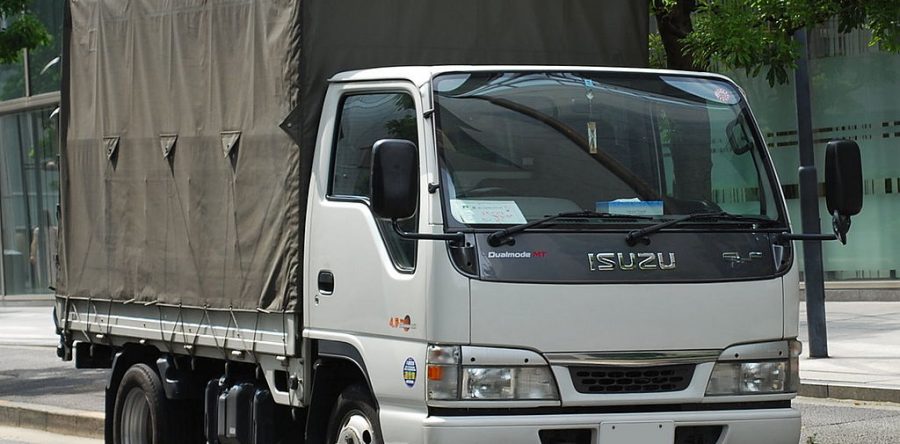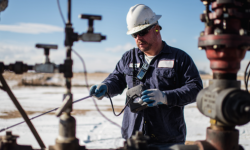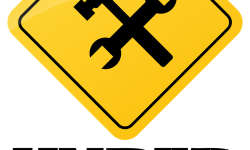Isuzu talks boosting safety training for small to medium fleets. Available from <http://www.bigrigs.com.au/news/isuzu-talks-boosting-safety-training-for-small-to-/3128629/> [] Photo Credit: By Mytho88 (Own work) [GFDL (http://www.gnu.org/copyleft/fdl.html) or CC BY-SA 3.0 (http://creativecommons.org/licenses/by-sa/3.0)], via Wikimedia Commons
ISUZU has commented on the need for a stronger safety focus across transport world, noting road transport's high representation within toll statistics.
The manufacturer has called for safety measures and technology that can be adopted by fleets and operators of all types and sizes:
Considering the terrible personal and financial toll road accidents take - and in view of road transport's high representation in these statistics due to the nature of the task - the industry must do everything it can to prioritise safety.
In this, smaller fleets would do well to adopt the safety procedures employed by larger operators.
That's the message from Isuzu Australia Limited (IAL) Director and Chief Operating Officer, Phil Taylor.
"By nature, smaller fleets are dealing with fewer resources, and unfortunately this can affect their ability to form and enforce strict safety policies and procedures,” Mr Taylor said."
One option available to them however, is to emulate the strategies used by larger companies.”
A common shortcoming of smaller fleets is that they deal with safety issues as they happen, on a case by case basis, and in a very specific way.
This is less effective and harder to control than the holistic approach large organisations must take by necessity.
The Statistics
Safe Work Australia reports that around 80 people are killed each year while working in or around a truck.
Perhaps more alarming is the fact that 39 per cent of these people die in single-vehicle incidents."
The statistics on single-vehicle deaths paint a very sobering picture,” Mr Taylor said.
"They indicate that rates of fatigue and speed are still much too high. Naturally, the same can be said of any factor that contributes to a fatality, but these figures are particularly sad considering issues like speed and fatigue can be dramatically reduced through cultural changes within a company."
We owe it to ourselves and our colleagues to do our utmost to improve this situation - to do everything in our power to effect real change in the industry.”
With fleets putting so many vehicles on the road, it follows that fleet owners deal with a high number of accidents.It's estimated that each year, 20-30 per cent of the approximately 800,000 vehicles used for fleet purposes in NSW are involved in a crash.
The cost of these repairs, replacements and excesses accounts for roughly 13-15 per cent of all fleet spending.
Heavy vehicles also have a significant effect on the road toll as a whole.
As reported by the National Transport Commission (NTC), trucks and buses make up about three per cent of vehicles on Australian roads, and about eight per cent of vehicle kilometres travelled.
Yet they're involved in 18 per cent of the total road deaths.These figures don't properly reflect the behaviour of truck drivers - the National Transport Insurance Accident Research Centre reports that car drivers are at fault in 82 per cent of fatal accidents that involve a truck and another vehicle.
Still, it is incumbent on the trucking industry to take every possible step to improve the statistics, to reduce the needless loss of life and the emotional toll on the drivers involved."
Just as we've seen the Australian Government reduce overall road deaths through changing the broader culture around drink driving, speeding and seatbelts, we must target workplace cultures to improve our industry's performance,” said Mr Taylor.
"It's simply a matter of finding the policies that make drivers genuinely safer, then communicating their importance to companies of all sizes.”
New Initiatives
In 2011, the NTC began engaging with the Australian business sector to encourage a more collaborative approach to the National Road Safety Strategy.
The result was the National Road Safety Partnership Program (NRSPP), launched in 2014, which aims to reduce Australian road deaths and injuries by 30 per cent by 2020.
The NRSPP brings organisations together to share procedures and principles and to pool the knowledge of some of Australia's largest fleets.
It offers concise information and tips on: gaining an understanding of road safety; promoting and showing leadership within the organisation; assessing the safety of a fleet's vehicles; assessing the licences of all drivers; ensuring regular maintenance; handling complaints or infringements; and route planning.
"The cumulative knowledge of the organisations involved in the NRSPP is priceless,” said Mr Taylor."And it's a credit to them all that they've been so generous and collaborative, putting aside any marketplace competition in favour of providing universal safety benefits."It's an impressive coming together for our industry.”
Cultural shift
There is some simple advice Mr Taylor subscribes to that can guide smaller fleets towards the safety levels seen in larger organisations.
The first, and perhaps most important step, is to make safety the number one priority - more than productivity, efficiency or workload. Any shortcut that compromises the safety of staff is not worth it. Regular maintenance programs must be introduced - checking everything, including brakes, transmissions, steering, wheel bearings and tyres - to ensure each vehicle is running at optimum condition. These elements must all be inspected before any trip, as well as checking lights and fluid levels, and confirming there are no oil, fuel or water leaks.
The height and weight must also be double checked. All of these policies and training programs should be documented, so the employee expectations are clear, and solid records kept on all related material.
"These initial steps set a positive baseline for promoting a productive safety culture, allowing fleet owners to then add their own, application-specific points,” Mr Taylor said."
And one of the biggest boosts employers can give to their safety potential, and future safety record, is to provide their drivers with adequate training." A good driver training program offers more than just the skills to control a vehicle and handle a problem situation - it focuses on improving vehicle familiarisation and helping drivers develop the attitude and awareness to avoid the problem in the first place.”
The Technology
The recent upswing in vehicle technology and connectivity has given fleets an even greater ability to monitor driver behaviour and enforce safety. The introduction of telematics - more common in larger companies though gaining popularity among small and medium fleets - has added another tool in the quest to reduce the workplace toll.
"Telematics gives fleet managers a direct line to the vehicle, allowing them to gather information on driver behaviour such as over-revving, extreme acceleration and braking,” said Mr Taylor."
Assessing this data, they can identify where improvements can be made." At Isuzu, we've conducted case studies on customers using our Connect and Connect Plus telematics, and seen marked improvements in driver habits.These adjustments result in safer driving and impressive boosts to efficiency.”
Safety breeds efficiency
In pure monetary terms, heavy vehicle crashes cost $3.8 billion per year.NSW workers' compensation statistics indicate that 8.6 per cent of all claims for absences of five or more days, and 9.9 per cent of the total gross compensation costs incurred, are for road traffic crashes at work and while commuting.Added to this is the cost of repairs and insurance, and late or lost jobs that can have lasting effects on reputation and future business.
Safer driving itself also contributes its own savings."There has been a direct correlation found between safer driving and reduced fuel use,” said Mr Taylor."It also reduces wear and tear on the vehicles, resulting in less required maintenance and lower overall operating costs. Vehicles last longer in the fleet, and employees stay longer in the business because they know their safety and wellbeing is highly valued."
Lower fuel consumption also means a reduction in emissions, so even the environment benefits."With these overwhelming advantages, it behoves smaller organisations to do everything in their power to improve safety levels. And one of the quickest routes to these improvements is tapping into the wisdom of the bigger operators.”
Isuzu talks boosting safety training for small to medium fleets. Available from <http://www.bigrigs.com.au/news/isuzu-talks-boosting-safety-training-for-small-to-/3128629/> [] Photo Credit: By Mytho88 (Own work) [GFDL (http://www.gnu.org/copyleft/fdl.html) or CC BY-SA 3.0 (http://creativecommons.org/licenses/by-sa/3.0)], via Wikimedia Commons









